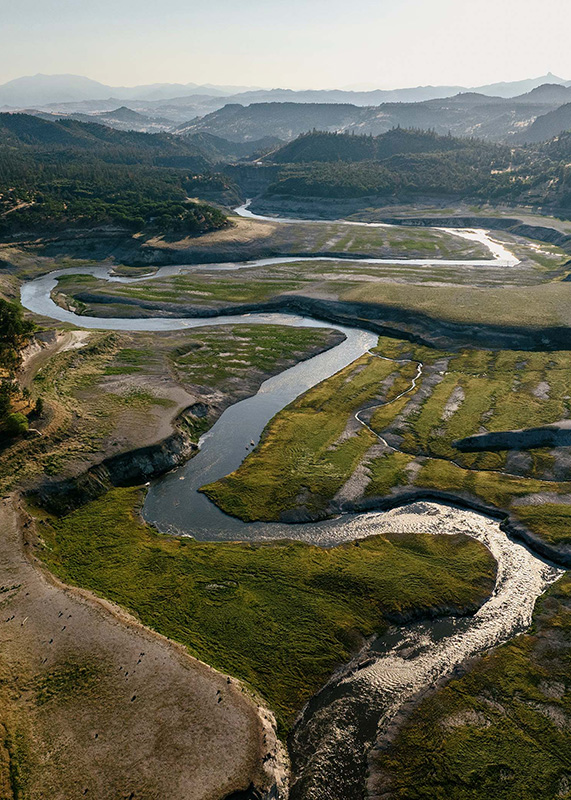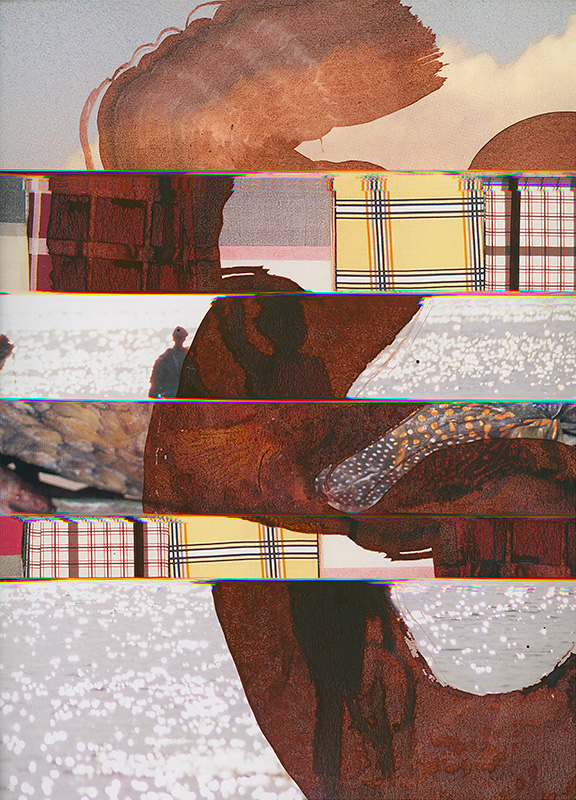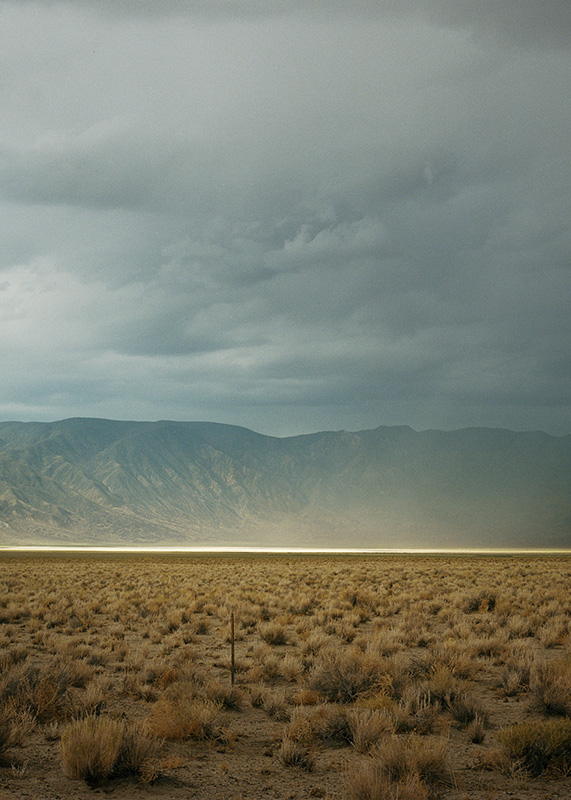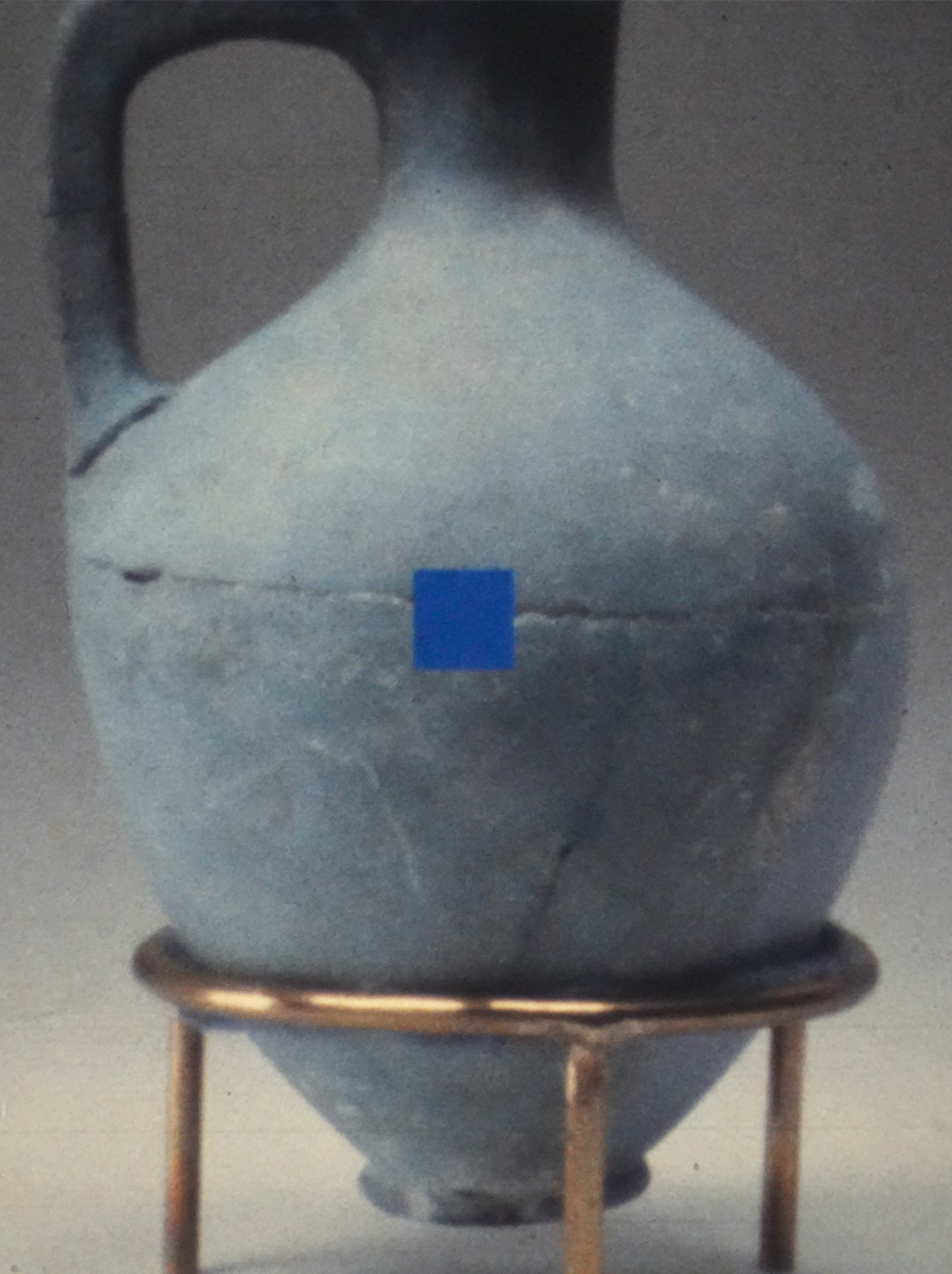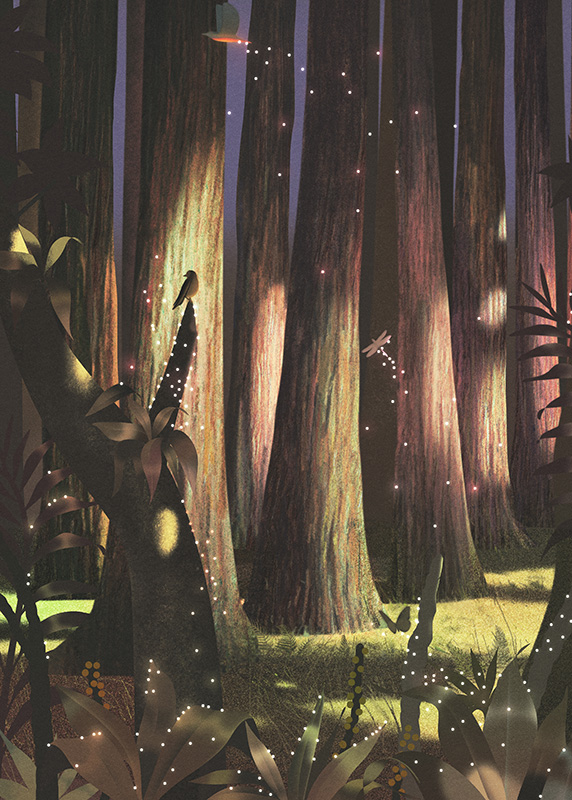
David Farrier is a professor of literature and the environment at the University of Edinburgh, where he also leads an Environmental Humanities research network. His current research is in literary responses to environmental change and the Anthropocene. His books include Anthropocene Poetics; Postcolonial Asylum; Unsettled Narratives; and Footprints: In Search of Future Fossils, which was awarded the Royal Society of Literature’s Giles St. Aubyn Award for nonfiction. David’s work has also appeared in Aeon, The Atlantic, and Lit Hub. His latest book is Nature’s Genius: Evolution’s Lessons for a Changing Planet.
Studio Airport, founded by Bram Broerse and Maurits Wouters, is an interdisciplinary design studio that ventures out into the cultural ether to forage for anomalies, creating work that spans art, culture, science, and ecology. In addition to Emergence Magazine, their creative partners include the Design Museum, See All This Art Magazine, Slowness, Normal Phenomena of Life, and Sapiens Magazine. They serve as master tutors at the Design Academy Eindhoven and were recognized as European Agency of the Year 2024 by the EDA.
David Farrier reflects on the immense burden of materials that mark our place on Earth.
All houses have memory. Life’s big occasions—the triumphs and heartbreak—drift through like smoke, leaving barely a trace. It’s the small moments they remember: the hollow at the turn of the stair, the scratches around the keyhole, or wood darkened by touch. “How we spend our days is, of course, how we spend our lives,” wrote Annie Dillard, and the houses we spend them in record it all.
Home is something we’ve all had to think about differently in these weightless days. During times of lockdown, the pandemic has meant repurposing rooms, with kitchens converted into classrooms and bedrooms into offices; others have been sunk in silence, empty of the usual traffic of friends and relations. The French philosopher Gaston Bachelard called the house a “psychic state,” stitching together the thoughts, dreams, and memories from which our lives are braided. For some it has been a refuge, for others a torment, but we have all, in some way, been confronted by where we spend our days.
In the last months of 2020, builders were pulling down walls in my home. The back was boarded off from the rest of the house for weeks. Winter was coming on, and while they worked, we were cramped together in one room, with the fridge behind the door and tins of food on the shelves instead of books. As they peeled back the layers built up over time, the house gave up its memories. Faded wallpaper and fragments of yellow newspaper bore witness to shifts in fashion and politics. Brickwork emerged from behind plaster; foundations were revealed beneath floorboards.
On the day when the old walls finally came down, my wife and I stepped into the new kitchen for the first time. The back of the house was stripped back to its bones, just an empty cavern in the chill dark. A gaping hole was open to the garden, but we were excited to see this new space, miraculously conjured from the old like a rabbit pulled from a hat. We had been cooped up for so long, it seemed that the house itself was exhaling.
“The house, as I see it, is a sort of airy structure,” wrote Bachelard, “that moves about on the breath of time.” But what I felt for much of the time the builders were working was very far from a sense of lightness. As dumpster after dumpster was filled with broken stone and shattered windows, what confronted me was not the airiness of my home but its weight: the immense burden of materials that mark my place on the Earth. I read how a team of scientists, writing in Nature, had estimated that 2020 was the year the mass of human-made materials exceeded that of all living things on the planet: the combined mass of our concrete, asphalt, aggregate, metal, glass, and plastic superseded the one Teratonne (one trillion metric tons) of plants, mammals, fish, bacteria, fungi, archaea, protists, and viruses. By mass, there are now more buildings and infrastructure (1,100 Gt) than there are trees and shrubs (900 Gt); more plastic (8 Gt) than land and marine animals (4 Gt).
The broken pieces of my home are a part of this, I thought as I read the article—this great wave of stuff breaking on the future. But reading on, I discovered that the scientists’ calculations did not include waste or the contents of landfill, nor did they include material extracted during construction or mining. Adding this material would mean the tipping point had already passed years ago, unnoticed and unrecorded.

Every house is a clock, marking the passage of our time on Earth.
In the days that followed, I couldn’t get the thought out of my head: human-made objects outweigh living things. It seemed impossible to account for, a fact too heavy to lift into comprehension.
In 1603, a Jesuit priest named Christoph Grienberger designed an impossible machine for lifting the planet, using rope pulleys and a system of twenty-four gears. Nearly two hundred years later, Henry Cavendish realized that he could calculate the density of the planet by using lead spheres small enough to hold in the palm of the hand. He attached two 1.6-pound spheres to the ends of a wooden rod suspended by a wire, which he set in motion like a pendulum. Cavendish also mounted two heavier lead spheres—weighing 348 pounds—a few inches away from the rod. By gauging the torque of the wire as the rod oscillated (which he did via a telescope, the whole apparatus being contained in a special wooden chamber to prevent even the slightest disturbance from corrupting his measurements), Cavendish could establish the gravitational force of the heavier spheres acting on the smaller, and so calculate the density of the Earth.
Confronted by scales that seem overwhelming, we often retreat to a perspective that is more familiar. In 1992, William Rees, then a regional planning professor at the University of British Columbia, remarked to a doctoral student that he appreciated the “smaller footprint” of his new desktop computer. Early desktop hard drives were laid flat on a desk, but this new design turned it on its side like a tower. At the time, Rees was working on a paper about calculating the total land area required to sustain a population, which he had called “regional capsules.” But it suddenly struck him that “ecological footprint” was a much neater way to frame his idea.
“The footprint” was, as it were, an idea with legs. We now talk of a host of different footprints as indicators of ecological outlays: most commonly, the footprint is an index for energy and water consumption and carbon emissions, but it also measures biodiversity, chemical, and thermodynamic costs. It works so well because it works on the scale of the body. It renders abstract concepts tactile, giving them weight and texture. It also makes the costs scalable. There are all kinds of online calculators ready to inform us of the pressure applied to an ecosystem, not by entire societies or populations, but by a single household, even by an individual. The carbon footprint, in particular, has become more of a moral calculation of the weight our conscience can bear.
Which is precisely what it was intended to do. British Petroleum produced the first “carbon footprint calculator” as part of an award-winning rebranding campaign, “Beyond Petroleum,” in the early 2000s. In the original ad, a voice—accompanying footage of dancers, athletes, and pregnancy—extols the virtues of individual effort: “beyond practice, perfection … beyond danger, a thrill … beyond a crisis, a solution.”
It’s a seductive notion. The carbon footprint calculator suggests that all it takes to ease the pressure is to step more lightly. Small is good, it seems to say: by small measures we weigh the Earth, count the cost, maybe even learn to save it. But it masks the fact that there is no such thing as an individual action when it comes to emitting carbon. In 2008, only a few years after BP launched its personalized carbon footprint calculator, researchers at MIT calculated the carbon emissions for someone homeless in America who ate only in soup kitchens and slept only in homeless shelters. They found that, far from having a minimal impact on carbon emissions, such a person—still embedded within a society soaked in fossil fuels, even if they owned nothing in that society—would indirectly emit twice the global average of CO2 every year.

It’s a seductive notion. The carbon footprint calculator suggests that all it takes to ease the pressure is to step more lightly.
Winter advanced, but the building work was slow. Because of the pandemic, there were delays in getting certain materials, and we had difficulty finding a plumber. For weeks, the back of the house remained a hollowed-out space, without a floor. “It’s like living in a bomb site,” we cheerfully told our families.
I always felt guilty saying this. Our temporary chaos was a choice, and nothing like what the people who really lose their home to a bomb or a wildfire experience. Still, I was intrigued by what it would be like to lose everything. It was a controlled fantasy, in which the people I care about were untouched but the weight of possessions fell away. The thought had a lightness to it, although this, too, made me feel guilty. “Like a bomb site,” I repeated on the phone, flushing slightly.
On the second day of the Blitz, bombs began falling on London’s Mecklenburgh Square. Number 37—the home of Virginia Woolf—was spared, but upon visiting the square in the days that followed, Woolf remarked that one of the ruined houses was “like a tooth knocked out—a clean cut.” One side was left standing, with scraps of cloth and a mirror still hanging on the wall in a gross parody of the domestic life that had been erased. Woolf’s home was not safe for long, however. A time bomb dropped during the same raid exploded a week later, blowing out the windows and collapsing the ceiling of number 37. The following month, their old house in Tavistock Square was also destroyed. (“Rubble where I wrote so many books,” Woolf recorded in her diary. “Open air where we sat so many nights.”) In November, another explosion behind number 37 hollowed it out entirely.
Unlike so many who lived through the Blitz, Woolf was not left homeless. She was living in her house in Rodmell, a small village in East Sussex, when the bombs fell. But standing in the wreckage of her former life left her feeling conflicted. The fragmentary notes she made in her diary entry skip between regret and elation:
Exhilaration at losing possessions—save at times I want my books and chairs and carpets and beds. How I worked to buy them—one by one—and the pictures. But to be free of Meck., would now be a relief.… I should like to start life, in peace, almost bare—free to go anywhere.
Being free of things, Woolf thought, would mean being free of the weight of attachments. There’s a whole industry now persuading us that things weigh us down, at least judging by the number of books, podcasts, and websites on decluttering your home. Many people pay for extra space to manage the overflow. The Self Storage Association has noted that there is enough storage capacity to physically house every single person in America, with more than seven square feet of floor for each one.
In 2000, the British artist Michael Landy spent twelve months cataloging everything he owned, from handwritten notes to a single PG Tips tea bag on a string. The final inventory included 7,227 items, weighing a total of 5.75 metric tons. For two weeks in February 2001, Landy and a team of assistants systematically destroyed every single one of his possessions as a performance art piece, Break Down. His furniture was smashed, his passport and birth certificate shredded. A mechanic dismantled his car. Even old artwork and photographs weren’t spared. Everything he owned was pulped or granulated and sent to a landfill site in Essex.
There’s a film of the demolition, which was performed in an empty department store on London’s Oxford Street. Landy and his assistants all wear blue overalls. His possessions travel on a conveyor belt in a great snaking line around the empty ground floor. Each one is methodically weighed, marked on a computerized inventory, and then shattered or sheared. The whine and bang and rumble of destruction make it seem like an assembly line in reverse, which is, in fact, how Landy himself described undoing the objects that had accumulated around his life. But the yellow plastic crates that traveled sedately along the conveyor belt, bearing clothes and bags, reminded me more forcefully of airport security, the prelude to a departure. “One way or another, I’m trying to get rid of myself,” Landy explained.
Like Woolf, Landy discovered that losing everything he owned was a negotiation with memory. His artist’s archive—the record of a lifetime’s work—was broken up. The most difficult thing to destroy was a sheepskin coat that had belonged to his father, which he saved until the very end. Despite this, the experience was “a huge rush,” he later recalled. And yet by eviscerating the material evidence of his entire life, he was guaranteeing that he’d be remembered in a particular way. “I kind of knew that as it was going on,” Landy said, “that I would always be known as that person who destroyed all his worldly belongings.” And in any case, “destroyed” is really just a euphemism. The remains of Landy’s things ended in landfill, to begin a new, patient existence among the 16 million metric tons of household waste that enters UK landfill every year.
“Away” is a lie, the kind that lets us dream of lives cleansed of possessions. Everything ends up somewhere. Landy’s cherished record collection was among the last of his things to be destroyed. He assembled a demolition playlist, which for the preceding two weeks had been the soundtrack to Break Down. It began with David Bowie’s “Breaking Glass” and ended with “Love Will Tear Us Apart,” by Joy Division. But for some reason, it didn’t include the song whose lyrics played on a loop in my head as I watched the film: Boy, you’re gonna carry that weight, carry that weight a long time.
At the end of the performance, Landy was a kind of modern miracle: a man entirely untethered from material possessions, lifted free of consumer society. But it didn’t last. Before he left the building, someone handed him a record to restart his collection. He had been the owner of precisely nothing for about ten minutes.

“Away” is a lie, the kind that lets us dream of lives cleansed of possessions.
Christmas arrived, and the builders stopped work. A few days later, the Scottish government announced another coronavirus lockdown, which made it impossible for work to resume. For months, all activity ceased. We counted ourselves fortunate to have a working kitchen again, but the house was only half-finished, with plastic sheets on the roof, patches of exposed brickwork inside, and chipboard where walls should be. A layer of white dust covered everything, as if our home were poised uncertainly between its renewal and entropy.
In “Time Passes,” the famous middle section of To the Lighthouse, Virginia Woolf imagines the empty holiday home of her protagonists, the Ramsay family, folded in silence after their departure. At first the house is stoical in the face of its abandonment. As the corrosive sea air noses its surfaces inquisitively—asking, “Will you fade? Will you perish?”—they remain indifferent, “as if the question they asked scarcely needed that they should answer: we remain.” But this resolve is tested. Seasons pass, delivering storms and fine weather. Swallows nest in the drawing room. Broken glass seeds the flower beds. Gradually the house loses its definition, the line between outside and inside blurring, until there comes a moment, Woolf says, “when if a feather alight in the scale … the house, sinking, falling, would have turned and pitched downwards … to lie upon the sands of oblivion.” The house does not fall, however. Builders arrive to prepare it for the Ramsays’ return, rescuing it “from the pool of Time that was fast closing over [it].”
As she was writing To the Lighthouse, Woolf recorded in her diary that she wanted it to be concerned with “the flight of time.” The house from which the Ramsays departed becomes a kind of clock. (The philosopher Michel Serres remarks that “to measure the passage of time she needed a clock; she used a house.”) But perhaps there is nothing unusual in this. Every house is a clock, marking the passage of our time on Earth. The average single-story US home—empty of possessions—weighs around 160 tons, half of which is poured into the concrete foundations, and the rest largely composed of steel, brick, wood, and glass. At the end of its life, most of those materials will enter landfill, where they will begin to form what the paleobiologist Jan Zalasiewicz calls “technofossils.” Technofossils are any human-made materials with the potential to endure long enough to register in the fossil record. They can range in size from microplastics to megacities. Their potential to leave a fossil lies partly in their durability, but it’s their abundance that virtually guarantees there will be a legacy of human-made things in the deep future.
In 2010, global cement production was 3.27 billion metric tons. It is expected to increase to 4.83 billion metric tons by 2030. Fifteen hundred billion bricks are made every year, burning 375 million metric tons of coal in the process. The annual global production of steel is 158 million metric tons; plastic is 368 million metric tons. Of course, not all of these materials go into building homes, but their prevalence makes any home an index of future fossils.
Zalasiewicz’s descriptions of technofossils as they take shape underground are strangely reminiscent of the slow accretion of decay in Woolf’s “Time Passes.” Over hundreds, even thousands of years, water may degrade even the most seemingly robust materials, like bricks or concrete, while sulfates and chlorides may corrode iron-based metals. But modern landfills are designed to prevent the escape of toxic leachates, protecting materials like plastic from the corrosive effects of oxygen and sunlight. With nowhere to go, in time (in the order of tens of thousands of years), leachates rich in calcium carbonate from interred cement, concrete, and plaster may bind the contents of the landfill into a solid mass. As millennia turn into millions of years, these vast boluses of discarded matter will form a layer in the strata, punctuated by the outlines of discarded possessions—spent Bic pens and warped bicycle wheels, outgrown high chairs and perforated garden hoses.
The cold weather has broken. Tomorrow, work will begin again on my house, but only on the outside. For now the lockdown persists, and I will be able to contemplate the exposed bricks and beams for a while longer.
After the destruction of 37 Mecklenburgh Square, Virginia Woolf worked on her last novel surrounded by piles of salvaged books and furniture. “Oh that we were empty and bare and unpossessed,” she exclaimed in exasperation at the chaos of her dismantled material life. Things can possess us where we are not careful, when possession becomes its own justification and reward, and we forget ourselves in them. And yet things, houses—they also remember. A house is nothing more, Bachelard writes, than “fossilized duration.” “We live in things,” says one of the characters in Woolf’s last novel, and we will continue to live in them long after we are gone.
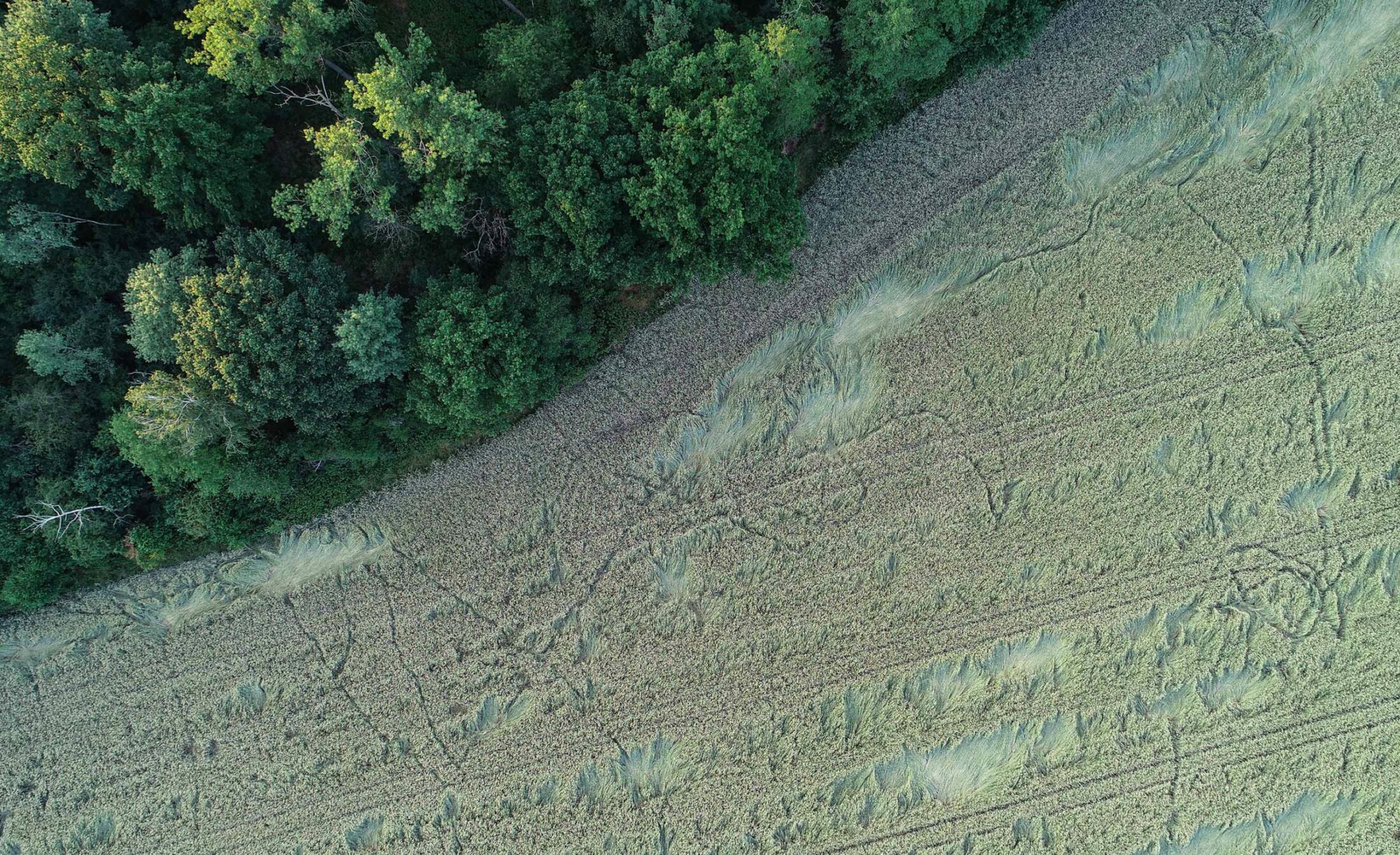
Desire Paths
As the coronavirus shrinks the scale of our individual worlds and sets us on an uncertain and increasingly narrow path, David Farrier finds inspiration in the meandering imprints left by the tracks of animals.

